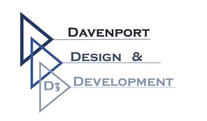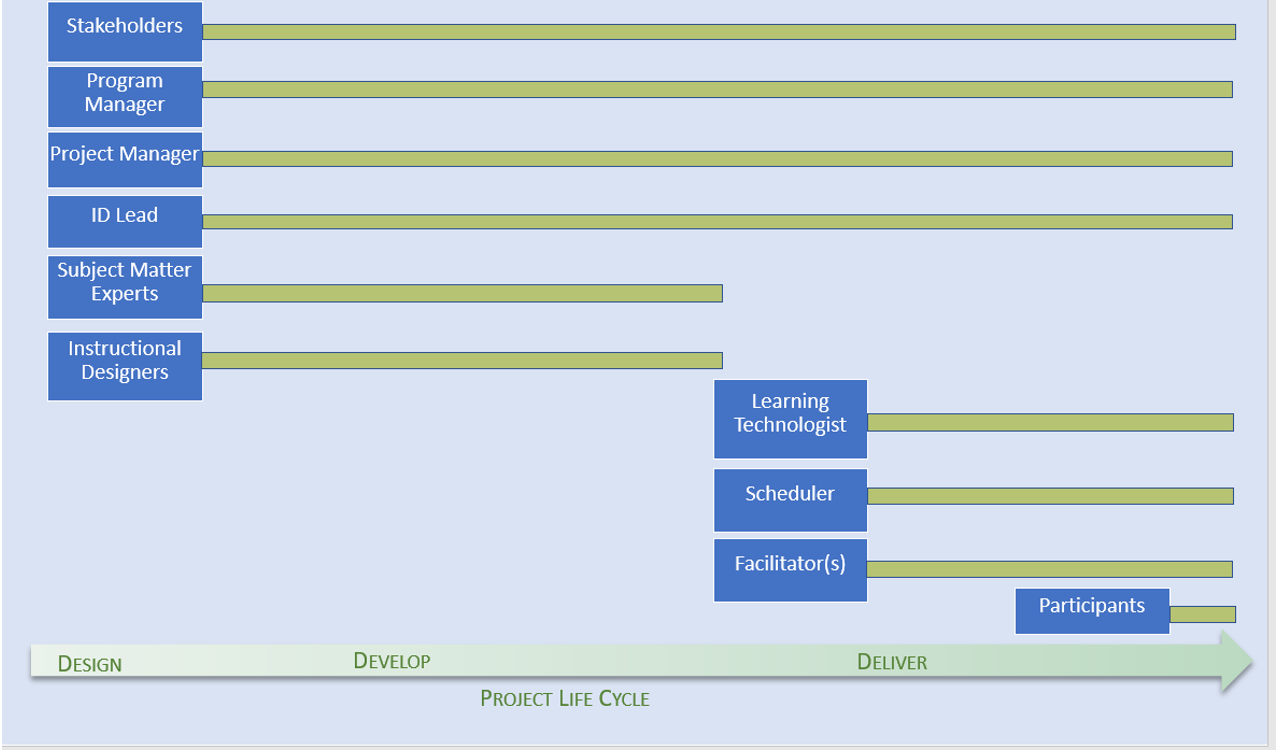Part I: Meet the Team
Have you ever been asked to:
First Things First: Assemble Your Team
Large-scale learning solutions share certain characteristics, such as the need for a solid team. Let’s meet them:
- Create a global onboarding curriculum?
- Implement a B2B sales course for thousands of employees?
- Skill up all employees to use a new software system?
- Create a customer education solution for a new product launch?
First Things First: Assemble Your Team
Large-scale learning solutions share certain characteristics, such as the need for a solid team. Let’s meet them:
There you have it! All the members of a solid project development team! In our next installment, we’ll put the team to work as we look through the lens of the project life cycle!
About the Author: Teresa Davenport has been leading award-winning large-scale instructional design projects for...well, longer than she would like to say! Her love of inspiring and supporting all team members, helping stakeholders achieve goals, and providing innovative learning solutions all come together as conductor of the learning orchestra described in this series! You can reach Teresa at [email protected], and of course, on LinkedIn!
- Stakeholders: They typically include at least one executive leadership sponsor, business unit representatives, Leadership & Development lead, and others depending on project dynamics. Your job is to find out what’s uniquely at stake for each stakeholder. Ask each of them: what does success of this learning solution look like to you? Write down their answers and as the project progresses, and check back with them periodically to be sure their success factors have not changed.
- Development Team: A typical Development Team includes:
- Program Manager: For very large projects, a Program Manager represents the entire team. This person’s role is to be the face of the team to stakeholders as well as the development team. Program Managers have their eyes on multiple workstreams, and keep the Project Managers and stakeholders aligned. Program Managers have ultimate responsibility for the project budget and timeline for all workstreams.
- Project Manager and/or ID Lead: These roles are sometimes subdivided where the PM takes ownership of budget and timeline while the ID Lead focuses on equipping and communicating with the content creators and Delivery Team as well as QA of deliverables. Depending on project dynamics and direction of the stakeholder, these two roles may be combined.
- Instructional Designers: The learning solution would not exist without the Instructional Designers! Instructional Designers (IDs) are equipped with skills and tools to take the learning blueprint – the Design Document (and create the Design Document if none exists), and bring the Design to life in the form of deliverables.
- Subject Matter Experts (SMEs): SMEs are the knowledge experts. While IDs apply methodology and use tools to create content, they rely upon SMEs for the content. IDs work closely with SMEs to gather content during development. SMEs are also critical during deliverable review cycles because they are the most knowledgeable in looking at the content through the learners’ eyes. Note that sometimes SMEs are also stakeholders as well as facilitators.
- Delivery Team: A typical Delivery Team includes:
- Learning Technologist: This is the person who receives final deliverables (or accesses them via corporate intranet/network), and places the deliverables in a location that’s accessible to learners, such as a Learning Management System (LMS), a corporate YouTube channel, links accessible via corporate intranet, eblasts (emails sent to a targeted group of learners with links to learning content), social media (e.g., Yammer), or other conduits for learner access.
- Facilitator(s): The facilitator is the person responsible for hosting synchronous learning, which may be in the form of classroom-based live learning, or a virtual learning session where learners access learning from their unique geographic location. NOTE: It’s a wise idea to have your lead facilitator(s) as part of your development team as a Subject Matter Expert. This way, the facilitators have more ownership in the content and will be more likely to deliver the course according to plan.
- Participants: What would a course be without participants? Don’t forget to identify them as you plan your deliverables! This may require quite a bit of data gathering on the part of the Learning Technologist as well as Scheduling Support.
- Scheduling Support: If learning is scheduled, then someone will be tasked with gathering and tracking participant contact info, reaching out via email or other methods to schedule training, and ensuring the participants’ travel plans are made in the case of classroom-based learning. This is typically a Learning Specialist skilled in administrative support.
- Leadership: Some large-scale learning solutions require the support of the participants’ leadership (e.g., direct managers). Early in the project life cycle, stakeholders need to form a strategic communication plan directed at the leaders of the target audience to be sure those leaders understand and buy in to the value this learning solution will provide.
There you have it! All the members of a solid project development team! In our next installment, we’ll put the team to work as we look through the lens of the project life cycle!
About the Author: Teresa Davenport has been leading award-winning large-scale instructional design projects for...well, longer than she would like to say! Her love of inspiring and supporting all team members, helping stakeholders achieve goals, and providing innovative learning solutions all come together as conductor of the learning orchestra described in this series! You can reach Teresa at [email protected], and of course, on LinkedIn!




 RSS Feed
RSS Feed